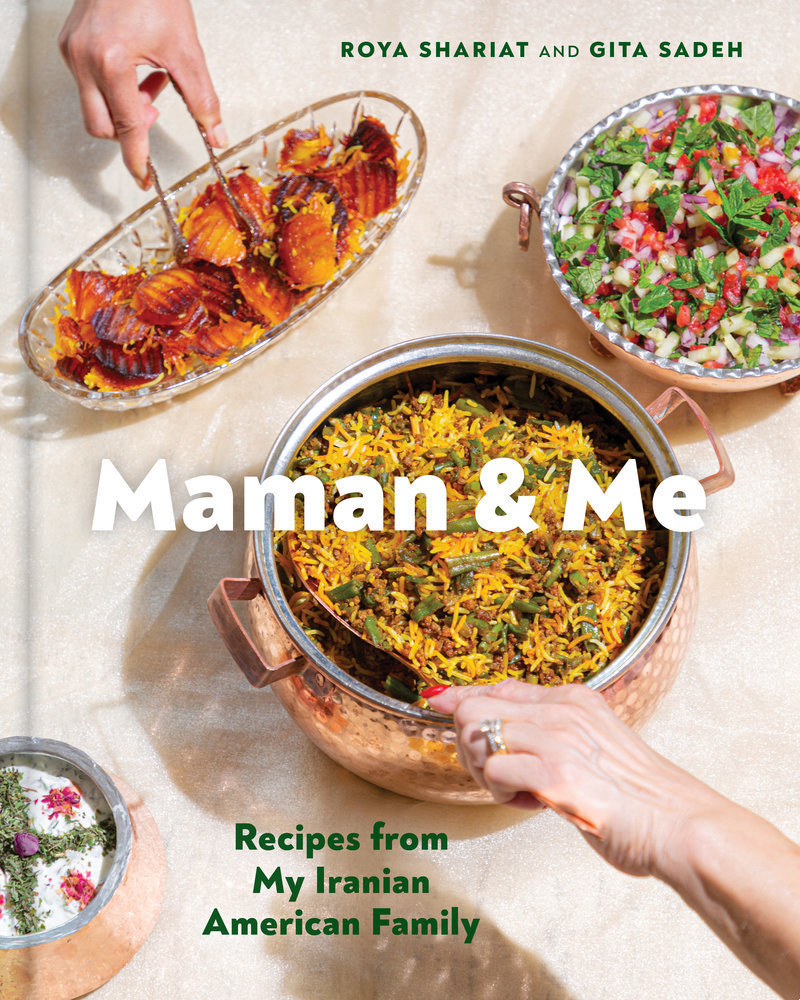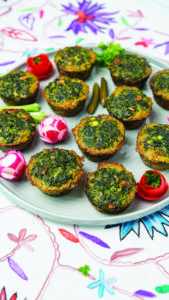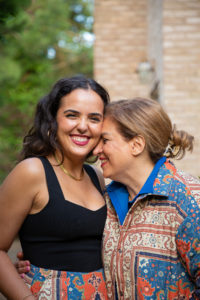If you’re late to enforcing your New Year’s resolutions, there’s still some hope! Millions of people around the world celebrate New Year in March, with the start of the spring. This holiday is called Nowruz, which means “New Day.” It takes place on the spring equinox, in 2024 on March 19. Nowruz is celebrated by people of different ethnicities, religions and backgrounds, from Albania, to Iran, to Afghanistan, to Kazakhstan.
My Iranian American family celebrates Nowruz every year, and I’m excited to share some of our annual traditions with you, to bring some joy and celebration to your spring. Nowruz is one of a few holidays where there’s a preparation period beforehand – this typically starts with khane takani, which literally translates to “shaking the house,” but really just means spring cleaning. This is a thorough clean-out of your rooms, closets, cabinets, everything. You can donate things that are old, gift things that you no longer need and make your space look beautiful and cleaned up.
The next bit of preparation takes place on the Tuesday or Wednesday evening the week before Nowruz (depending on your time zone!). We call this day Chaharshanbeh Suri, or Scarlet Wednesday. We make bonfires at sunset and jump over them to cleanse ourselves of any bad energy, illnesses or negativity prior to the New Year. This tradition has its roots in Zoroastrianism, one of the world’s oldest religions in Iran. On this holiday, children will go door to door clanging spoons on pans and making noise in exchange for some delicious treats. People of all ages celebrate this holiday in parks, in their backyards – even jumping over a candle in your own home counts! It’s the practice that reminds us of the ancient roots of this holiday, and the importance of starting the New Year with a clean and positive slate.
Then, in the week leading up to Nowruz, we set up our Haft Sin, which is a table with seven symbolic items that start with the letter “S.” This includes sumac powder (something we cook with and eat!), coins that are called sekkeh, vinegar that we call serkeh and more. Families spend a lot of time and effort decorating this table, including important family heirlooms on it, and creating a cohesive, stunning spread. Children are typically involved in some of the decorative items, like dying eggs in all colors of the rainbow, for display on the Haft Sin. The items on the table symbolize regrowth, renewal, prosperity, fertility, and good fortune.
The Nowruz holiday period lasts roughly 13 days, and during that time days are full of seeing loved ones, viewing each other’s Haft Sins, and enjoying delicious food together. There are some typical holiday dishes we make for Nowruz, including a delicious bean and noodle soup called ash-e reshteh, where the noodles symbolize all the possibilities in our lives. Nowruz cookies include crispy egg-yolk and pistachio cookies and rosewater and almond flour cookies. On the night of the New Year itself, we make any kind of fish (symbolizing life), herbed rice and herb frittatas. The green herbs symbolize nature, springtime, renewal and growth.
We’re excited to share one of those delicious herb-filled recipes with you, from ourdebut cookbook Maman and Me: Recipes from Our Iranian American Family. This dish is called Kuku Sabzi, a frittata filled with delicious, verdant greens. Bon appetit, or, as we say in Farsi, Nooshe Jaan! That means “may it nourish your soul.”
©Farrah Skeiky
Spring Herb Frittatas (Kuku Sabzi) – veg
Makes 1 large kuku or 12 individual kuku cakes
Kuku is the name for egg-based frittatas mixed with vegetables and other ingredients. Kuku sabzi is full of herbs and perfect for brunch, snack time or as a dinner side. After Maman made kuku sabzi for the thousandth time for an Iranian New Year party, she had an epiphany. Rather than making it in a skillet, she could use cupcake tins so everyone could have their own portion with an ideal ratio of crisp edges to soft middle. We experimented with different ingredient ratios and cooking times to perfect it, and voilà. We’re sharing the technique for small kuku cakes baked in a muffin tin in the oven, as well as how to make one larger kuku on the stovetop.
6 large eggs
1 tablespoon all-purpose flour
1 teaspoon baking powder
1 teaspoon ground turmeric
1 teaspoon fine salt
1⁄2 teaspoon freshly ground black pepper
2 cups chopped fresh flat-leaf parsley
2 cups chopped fresh cilantro
1 cup finely chopped fresh dill
1⁄2 cup finely chopped fresh chives
1⁄2 cup finely chopped green onions
4 garlic cloves, grated
1 heaping tablespoon finely chopped walnuts (optional)
1 heaping tablespoon barberries (optional) – (available online or locally at Middle Eastern or Persian markets such as Yekta Market in Rockville, Md. or Safeways)
1⁄3 cup vegetable oil
Cooking spray
In a large bowl, beat the eggs until uniform in color. Whisk in the flour, baking powder, turmeric, salt and pepper. Stir in the parsley, cilantro, dill, chives, green onions, garlic, walnuts (if using) and barberries (if using). The kuku mixture should just barely bind together: The less eggy the batter, the more green the end result will be.
If you’d like to make one large kuku on the stove, warm the oil in a large frying pan over medium heat until glistening. Pour in the egg and herb mixture and let cook for 10 to 15 minutes, checking the bottom after 10 minutes to see if it’s browned. Using a wooden spatula, divide the kuku into fourths or sixths, and flip the pieces over. Cook uncovered for another 10 to 15 minutes, or until lightly browned on both sides. Place the kuku pieces on a platter lined with paper towels to soak up any excess oil. Flip the pieces and leave for a few more minutes.
If you want to make individual kuku cakes, set a rack in the middle of the oven and preheat the oven to 350°F. Spray a muffin tin generously with cooking spray.
Whisk the oil into the egg and herb mixture to combine. Spoon the kuku mixture into the muffin tin, filling each cup about two-thirds full. Bake for 25 to 30 minutes, or until the kuku cakes are light brown and a cake tester inserted in the middle comes out clean.
Kuku is delicious warm or cold and will keep in the refrigerator for up to one week. It can also be frozen for up to 3 months and reheated in the oven.
From Maman & Me by Roya Shariat and Gita Sadeh. Copyright © 2023 by Roya Shariat. Reprinted by permission of PA Press, an imprint of Chronicle Books.



